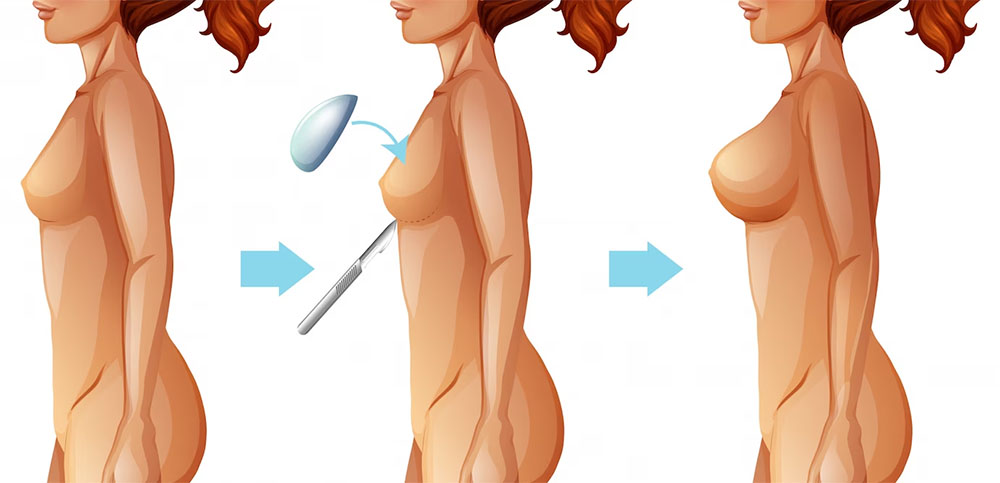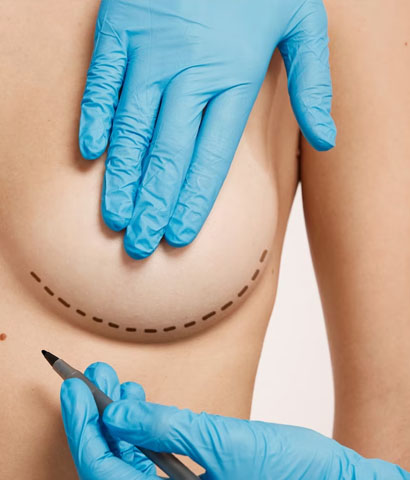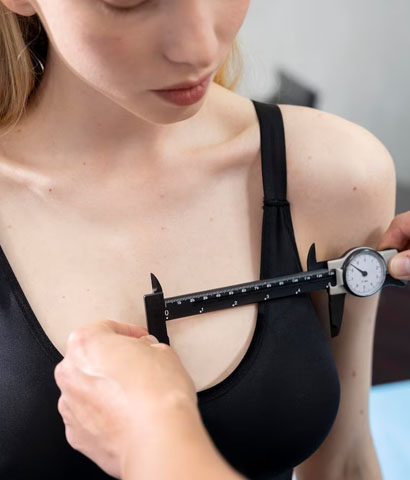
Augmentation mammaplasty, more commonly known as breast augmentation or breast enlargement, is a surgical procedure aimed at increasing the size, shape, or fullness of the breasts using implants. It is one of the most popular cosmetic procedures worldwide. Women may choose breast augmentation for various reasons, such as enhancing their self-image, restoring breast volume after pregnancy, or achieving a more balanced breast size.
There are two main types of breast implants used for augmentation mammaplasty:
Saline implants: These implants are filled with sterile saline solution (saltwater). They can be filled with varying amounts of saline to adjust the firmness, shape, and feel of the breast. In the event of an implant rupture, the saline solution will be safely absorbed by the body.
Silicone implants: These implants are filled with silicone gel, which has a more natural feel and texture, closely resembling breast tissue. However, in case of a rupture, the gel may remain within the implant shell or escape into the breast implant pocket, potentially requiring surgical intervention to remove or replace the implant.
The surgical procedure for breast augmentation using implants typically involves the following steps:
Anesthesia: The patient is given general anesthesia or intravenous sedation to ensure comfort during the procedure.
Incision: The surgeon makes an incision in one of several locations, such as under the breast crease, around the areola, or in the armpit, to minimize visible scarring.
Implant placement: The breast implant is inserted either behind the breast tissue and over the pectoral muscle (subglandular placement) or under the pectoral muscle (submuscular placement).
Closing the incisions: The surgeon closes the incisions with sutures, surgical tape, or adhesive, and the incision lines will fade over time.
Recovery: The patient is closely monitored during the initial recovery period, and post-operative instructions are provided to ensure proper healing and minimize complications.
As with any surgery, breast augmentation using implants carries potential risks and complications, such as infection, scarring, implant rupture, and the need for additional surgeries. It is essential to discuss the pros and cons of breast augmentation with a qualified plastic surgeon to make an informed decision and establish realistic expectations.

Breast Augmentation İmplant Choice
Choosing the right breast implant for augmentation mammaplasty is an important decision that should be made in consultation with a qualified plastic surgeon. The choice of implant will depend on various factors, including the patient’s goals, anatomy, and personal preferences. Here are some factors to consider when choosing breast implants:
Implant type: As mentioned earlier, there are two main types of breast implants – saline and silicone. Both have their pros and cons:
Saline implants: They have a slightly firmer feel compared to silicone implants and may be more prone to visible rippling. However, they can be adjusted more easily and have a lower risk of complications in case of rupture since the saline solution is safely absorbed by the body.
Silicone implants: These implants have a more natural feel and are less likely to show rippling. However, they require a larger incision and carry a higher risk of complications if ruptured, as the silicone gel may need to be surgically removed or replaced.
Implant shape: Breast implants come in two primary shapes – round and anatomical (teardrop). Round implants provide a fuller appearance in the upper part of the breast, while anatomical implants have a more natural, sloping shape that mimics the contour of a natural breast. The choice depends on the patient’s desired look and body type.
Implant size: Implant size is measured in cubic centimeters (cc) or milliliters (mL) and correlates to the volume of the implant. The choice of size should be based on the patient’s goals, anatomy, and tissue characteristics. Your plastic surgeon can guide you in selecting the appropriate size to achieve the desired results while minimizing the risk of complications.
Implant profile: The profile refers to the implant’s projection or how far it extends outward from the chest wall. Implants come in different profiles, such as low, moderate, and high, to suit different body types and aesthetic goals.
Implant surface: Breast implants can have either a smooth or textured surface. Smooth implants have a softer feel and may move more naturally within the breast pocket, while textured implants are designed to reduce the risk of complications, such as capsular contracture.
It is crucial to have an open and honest conversation with your plastic surgeon about your expectations and concerns. They will help you choose the most suitable implant type, shape, size, and other features based on your unique needs and preferences. Remember that achieving a natural, balanced appearance and minimizing complications are the primary goals of breast augmentation surgery.
Breast Augment Frequently Asked Questions
Breast augmentation is a surgical procedure that enhances the size and shape of the breasts. This is typically done through the use of breast implants, which are inserted into the breast tissue to create a fuller and more proportionate appearance.
Good candidates for breast augmentation are women who are in good overall health and have realistic expectations for the results of the procedure. Candidates should also be dissatisfied with the size or shape of their breasts and have a desire to enhance their appearance.
Breast augmentation is typically performed under general anesthesia. The surgeon makes an incision in the breast tissue and inserts the breast implant either behind the breast tissue or beneath the chest muscle.
Recovery after breast augmentation can vary depending on the extent of the procedure and the individual patient. Most patients can return to work and normal activities within a week or two, but strenuous exercise should be avoided for several weeks. The breasts may be sore and swollen for several weeks following the procedure.
As with any surgical procedure, there are risks and potential complications associated with breast augmentation. These can include bleeding, infection, implant rupture, and changes in sensation. It’s important to discuss the risks with your surgeon before undergoing the procedure.
The results of breast augmentation can be long-lasting, but they are not permanent. Over time, the breast implants may need to be replaced due to normal wear and tear or changes in the breast tissue.
The cost of breast augmentation can vary depending on the type of implant used, the extent of the procedure, the location of the practice, and other factors. It’s important to discuss the cost of the procedure with your surgeon before making a decision to undergo the procedure.




